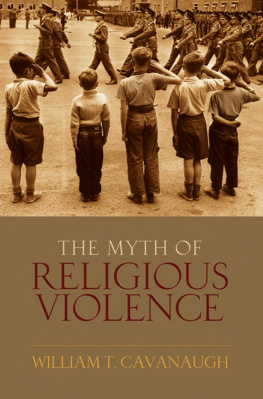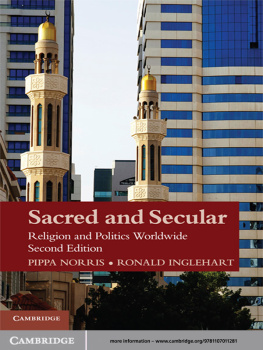Also available from Continuum
Consuming Religion, Vincent J. Miller
The Continuum Companion to Religion and Film, Edited by William L. Blizek
Graven Images, edited by Christine Hoff Kraemer and A. David Lewis
Pop Cult, Rupert Till
The Springfield Reformation, Jamey Heit
Secular
Steeples
Popular Culture and the
Religious Imagination
2nd edition
by
Conrad Ostwalt
Bloomsbury Academic
An imprint of Bloomsbury Publishing Plc
50 Bedford Square | 175 Fifth Avenue |
London | New York |
WC1B 3DP | NY 10010 |
UK | USA |
www.bloomsbury.com
First published 2012
Conrad Ostwalt, 2012
All rights reserved. No part of this publication may be reproduced or transmitted in any form or by any means, electronic or mechanical, including photocopying, recording, or any information storage or retrieval system, without prior permission in writing from the publishers.
Conrad Ostwalt has asserted his right under the Copyright, Designs and Patents Act, 1988, to be identified as Author of this work.
No responsibility for loss caused to any individual or organization acting on or refraining from action as a result of the material in this publication can be accepted by Bloomsbury Academic or the author.
British Library Cataloguing-in-Publication Data
A catalogue record for this book is available from the British Library.
ISBN: 978-1-4411-8341-5
Library of Congress Cataloging-in-Publication Data
Ostwalt, Conrad Eugene, 1959-
Secular steeples : popular culture and the religious imagination / Conrad Ostwalt. -- 2nd edition. pages cm
Includes bibliographical references and index.
ISBN 978-1-4411-5617-4 (hardcover) -- ISBN 978-1-4411-7286-0 (pbk.) -- ISBN 978-1-4411-8341-5 (ebook (epub)) -- ISBN 978-1-4411-2314-5 (ebook (pdf))
1. Popular culture--Religious aspects. 2. Religion and culture. 3. Secularism. I. Title.
BL65.C8O88 2012
201'.7--dc23
2012005875
Typeset by Fakenham Prepress Solutions, Fakenham, Norfolk, NR21 8NN
to
Mary and Heather
for
everything
American secular culture is saturated with religion and religious messages. I am not sure if I arrived at this conclusion through my academic reflection or because my youth was dominated by religious and moral teachings and primed me to view the world in this way. Nevertheless, I believe the unique history of America has encouraged a culture that is at once thoroughly secular in its organization while essentially religious in its orientation. I began years ago to explore this dual character of culture through my teaching and writing. This book continues that investigation.
I began formal research for this book during the autumn of 1996. I thank Appalachian State University for a semester off at that time to pursue my initial research. This work eventually led to the publication of Secular Steeples in 2003, and I thank all those who have read the manuscript and used it in courses since then. In particular, I thank the students from Warner Pacific College for their thoughtful use of the First Edition through the years. Further, the editors at Continuum have contributed significantly to the Second Editionin particular, Lalle Pursglove has seen this work to completion after Kirsty Schaper first envisioned and commissioned the Second EditionRachel Eisenhauer and Kim Storry have provided guidance throughout. As the Second Edition evolved, several people acted as inquisitors and helped shape some of the new work: Garrett Draper and John Michael Cord pushed me on Whitehead; David Smith challenged me to think about the emerging tradition and utopian cultures; the Pathways Sunday School Class allowed me to play provocateur; Mike Vines helped me formulate some of my ideas and provided feedback and correction; Brad and Sue provided inspiration and information on sacred space; Boots and Red provided insight to motorcycle culture; Oldie Goldie helped me think in new ways about time and space; Wiggles helped me clear my head.
My teachers and colleagues continue to shape my work in ways that I do not even fully realize. Drs. Grant Wacker, Wesley Kort, Christy Lohr Sapp, Peter Kaufman, Joel Martin, and Carolyn J. Medine have helped me through the years. More recently, Dean Anthony Calamai has provided support for my work at Appalachian State University and moral support as a friend. The faculty members in the Department of Philosophy and Religion have been instrumental in my work in one way or another through the years.
I am grateful to my previous publishers for permission to use or to reprint previously published work. Some of this work is reprinted in edited or altered form. Appropriate acknowledgement is given in notes.
These works include After Eden: The Secularization of American Space in the Fiction of Willa Cather and Theodore Dreiser (Bucknell University Press, 1989); Screening the Sacred: Religion, Myth, and Ideology in Popular American Film, ed. Joel Martin and Conrad Ostwalt (Westview Press, 1995); and Love Valley: An American Utopia (Popular Press, 1998), reprinted by permission of the University of Wisconsin Press. In addition to drawing in general upon these sources, some material is reproduced by permission. North Carolina Humanities, The Southern Literary Journal, The Journal of Religion and Film, and Currents have all granted permission to use previously published material and work.
As always, Mary and Heather give me joy and hope; love and care; happiness and inspiration; beauty and grace. Through them, I have come to see the world differently, and it is a much brighter place because of their presence in my life. They have taught me what is important and what is not; they have modeled tenacity and strength and purpose of being. I owe them everything, and I dedicate this work and my life to them.
Conrad Ostwalt
Appalachian State University
December 21, 2011
Chapter Outline
God as becoming
The God metaphor: the process of becoming God
Relational knowing (or coming to know)
Towards a theology of culture
Some components of a theology of culture that depart from traditional theology
Study guide
During the first two decades of the twentieth century, a group of ingenious young physicists were remaking the way scientists and philosophers would understand reality. Niels Bohr, Werner Heisenberg, and others were pressing ahead with quantum thinking, building on the revolutionary work of Albert Einstein. Their work questioned the old certainties of Sir Isaac Newtons mechanistic world where causation and determination ruled science and theology. The new thinking had little room for certitude and, in its place, physicists began to think in terms of probabilities and uncertainty. At the same time, a mathematician-turned-logician-turned-metaphysician was trying to establish a philosophical foundation for this new physics. Alfred North Whitehead wrote to create a metaphysical basis for the new reality of the quantum world. New ways of thinking emerged as part of the postmodern agenda of the late twentieth century, and the result was, at one and the same time, a world where God could be declared dead yet also could be freed from the shackles of old thinking. If God were to exist in the quantum world, it could no longer be a God of causation or even an ultimate ground of being. Rather, God must be thought of as becoming and reality as novelty.buried, and process theologians began to press the question of God given the new metaphysical limitations.


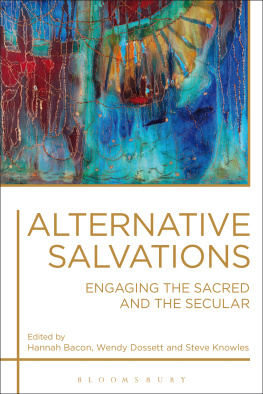
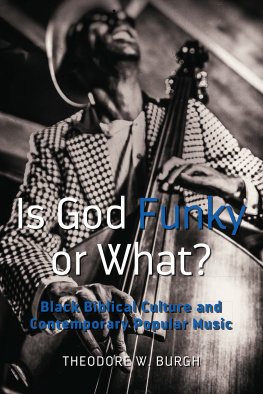
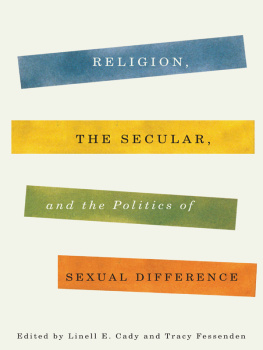
![Blackford - Freedom of religion [and] the secular state](/uploads/posts/book/167779/thumbs/blackford-freedom-of-religion-and-the-secular.jpg)
